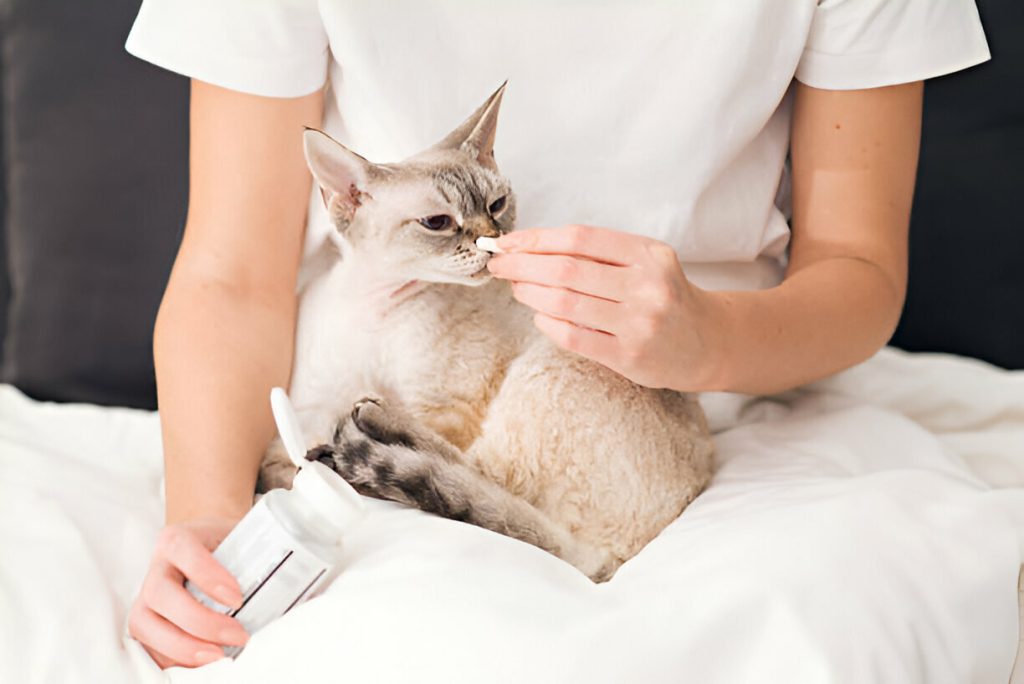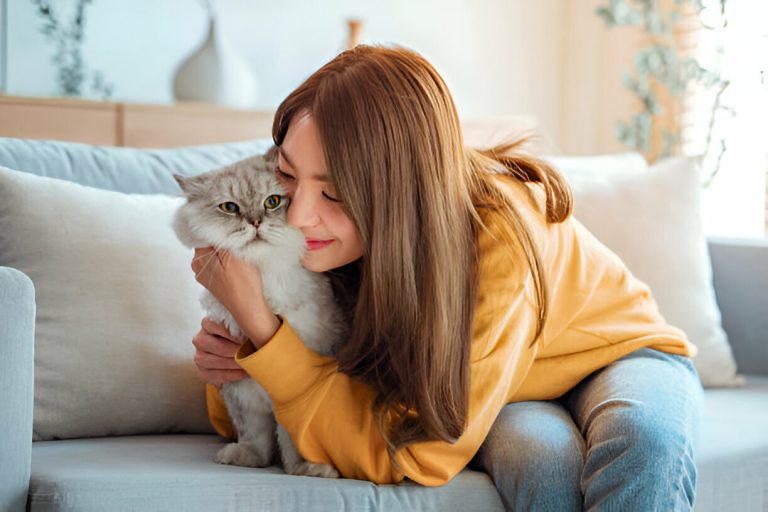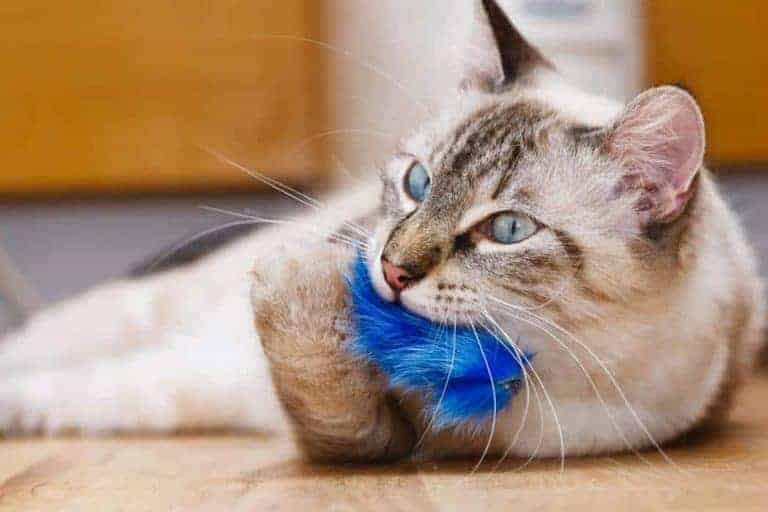Cat Prozac Dosage: Understanding Proper Administration and Safety Guidelines

Prozac, a brand name for the drug fluoxetine, is not only a widely recognized antidepressant in human medicine but also finds utility in our feline companions. When behavioral issues in cats are refractory to environmental modifications and other interventions, a veterinarian may prescribe Prozac to address conditions such as anxiety, aggression, or obsessive-compulsive disorder. Designed to modulate neurotransmitter levels in the brain, this medication, when tailored for cats, takes into consideration their unique metabolism and the pharmacokinetics of the drug in the feline body.
Administering Prozac to cats necessitates a delicate balance to achieve therapeutic effects while mitigating potential adverse reactions. The dosage, typically determined based on the cat’s weight and the nature of the behavioral issue, is much lower than that used in humans and requires precise measurement. As with any psychotropic medication, initiation of therapy should begin with the lowest possible dose and gradually increase to the effective dose. This cautious approach helps acclimate the cat’s system to the medication and reduces the risk of side effects, such as lethargy, gastrointestinal upset, or changes in appetite.
Furthermore, it is vital to understand that Prozac for cats must be prescribed by a qualified veterinarian, who will provide thorough guidelines for administration, including the frequency and duration of medication use. Monitoring the cat’s behavior and assessing for any side effects or lack of improvement is a continuous process. The pet owner is often called upon to keep detailed observations of any changes in their cat, supplementing the veterinary team’s managed care approach.
Upcoming discussions will delve into the specifics of monitoring and adjusting Cat Prozac dosages over time. This includes recognizing signs of improvement or potential bouts of side effects, comprehension of long-term use implications, and understanding the importance of maintaining consistent communication with one’s veterinary professional. The forthcoming information aims to empower cat owners with knowledge to navigate the intricacies of psychopharmacology in feline behavior management. It underscores the profound commitment to ensuring the well-being of our feline friends, with an eye on the diligent, informed application of science-based medical interventions.
- Cat Prozac dosage typically starts with a low dose that may be gradually increased, based on veterinary guidance and the cat’s response to the medication.
- The proper dosage of Prozac for cats largely depends on the feline’s weight, age, and overall health status, as well as the severity of the condition being treated.
- Fluoxetine, the generic name for Prozac, is prescribed to cats to treat a variety of behavioral issues, including aggression, anxiety, and obsessive-compulsive disorders.
- It is crucial to follow a veterinarian’s prescription without deviation, as incorrect dosages can lead to serious health consequences or reduced efficacy of the medication.
- Administration of Cat Prozac can be done orally, typically once a day, and it’s recommended to give the medication at the same time each day to maintain consistent blood levels.
- Side effects of Prozac in cats may include lethargy, changes in appetite, gastrointestinal upset, and behavioral changes, which should be monitored and reported to a vet.
- Long-term use of Cat Prozac requires regular veterinary check-ups to monitor the cat’s health and make dosage adjustments if necessary.
- It’s essential not to abruptly stop giving Prozac to a cat, as sudden discontinuation can lead to withdrawal symptoms. Any changes in medication should be done under a vet’s guidance.
- Interactions with other medications are a possibility; therefore, it’s imperative to inform the veterinarian of all medications and supplements the cat is currently taking before starting a Prozac regimen.
- Store Cat Prozac in a safe place, out of reach of children and pets, and at room temperature to ensure the medication’s effectiveness.

What is the Appropriate Dosage of Prozac for Cats?
Fluoxetine, commonly known by the brand name Prozac, is a medication that can be prescribed for cats to manage a range of behavioral issues such as anxiety, aggression, and obsessive-compulsive disorders. The cat Prozac dosage is critical to its effectiveness and safety. It is typically administered once a day, and the exact dosage can vary based on the cat’s weight, the severity of the symptoms, and the individual response to the medication. Dosage recommendations typically start at 1 mg per pound of body weight for cats, with adjustments made as necessary based on the veterinarian’s evaluation. It is important to never modify the dosage or discontinue the medication without consulting with a veterinarian.
The context surrounding the use of Prozac for cats stems from the need to manage behavioral conditions that are not only detrimental to their quality of life but can also disrupt the harmony of a household. Cats can exhibit signs of stress, anxiety, and aggressive behavior for a variety of reasons such as changes in their environment, conflict with other pets, or underlying medical conditions. Just like in humans, these mental health issues can sometimes be treated with psychoactive drugs like Fluoxetine. Understanding the appropriate cat Prozac dosage is paramount, as cats are particularly sensitive to medication, and accurate dosing is essential to minimize potential side effects and ensure the treatment’s efficacy.
Alternative Therapies for Feline Anxiety
Feline anxiety can manifest in many forms, from excessive grooming to abnormal vocalizations and even aggressive behavior. To alleviate these symptoms, pet owners are increasingly turning towards holistic and alternative remedies. One such method includes pheromone therapy, which involves diffusers, sprays, and collars that release a synthetic version of the feline facial pheromone. This scent is associated with comfort and can help soothe cats in high-stress environments. Additionally, herbal supplements like valerian root, chamomile, and catnip are also employed to calm anxious felines. These botanic treatments can be administered through treats, capsules, or even as additions to a pet’s meal, aiming to provide a natural, less invasive method to manage anxiety.
Dietary Adjustments for Stress Reduction in Cats
Adjustments in diet can play a pivotal role in managing feline stress and anxiety. The incorporation of balanced nutrients and calming additives can potentially mitigate stress responses. Omega-3 fatty acids, for instance, are known to have anti-inflammatory effects that could have a direct impact on improving a cat’s mood and cognitive function. Similarly, the amino acid L-Theanine, found in green tea leaves, is being explored as a dietary addition for its reputed calming effects. Probiotics are another area of interest, with studies suggesting that gut health may be closely linked to mood and behavior. Incorporating these elements into a cat’s diet necessitates precise formulations, conducted under the advisement of a veterinarian to ensure these initiatives do not disrupt the cat’s core nutritional requirements.
Environmental Enrichment Strategies
Environmental enrichment is critical in minimizing stress levels in felines by providing physical and mental stimulation. This includes offering a variety of toys that cater to the cat’s natural hunting instincts, such as feather wands or laser pointers, to engage them in play. Scratching posts made from various materials like cardboard, sisal, or carpet can satisfy a cat’s need to scratch, mark territory, and stretch their muscles. Additionally, creating vertical space with shelves or cat trees allows for exploration and provides the opportunity for cats to retreat to a safe height, which can be especially beneficial in multi-cat households. Interactive feeders and puzzle toys that challenge cats to retrieve treats can also keep them mentally stimulated and prevent boredom-related stress.
Behavioral Modification and Training
Behavioral modification and training play an essential role in managing anxiety in cats. Implementing a routine can help create a sense of security, as cats are creatures of habit. Through the use of positive reinforcement techniques, owners can train their cats to associate anxiety-inducing situations with rewards, thereby reducing fear and building confidence. Clicker training, a form of operant conditioning, has been successfully used to teach cats new behaviors and alter unwanted ones. Through this method, a click sound is used to mark desired behavior, and treats are given as rewards, aiding in effective communication between the cat and its owner. Such training sessions not only improve behavior but can also strengthen the bond between human and feline, aligning with a holistic approach to anxiety management.
What is the standard dosage of Prozac for cats?
The standard dosage of Prozac (fluoxetine) for cats typically ranges from 0.5 to 1 mg per pound (1 to 2 mg/kg) of the cat’s body weight. The exact dosage, however, should be prescribed by a vet based on the individual cat’s needs, health condition, and response to the medication. It’s important to follow the vet’s instructions carefully and not to adjust the dosage without professional advice.
Prozac is often given once a day, but in some cases, a vet may recommend dividing the dose into two administrations per day. The medication can come in the form of pills, capsules, or a liquid, and compounding pharmacies can also create formulations to ease the administration process for your cat. Always ensure you administer the medication with food or precisely as directed by the veterinarian to prevent possible stomach upset.
Can Prozac cause side effects in cats?
Yes, like all medications, Prozac can cause side effects in cats. Common side effects may include lethargy, sleepiness, decrease in appetite, vomiting, diarrhea, and changes in behavior such as increased aggression or anxiety. Although many cats tolerate Prozac well, these potential side effects should be monitored closely, especially when the cat first starts taking the medication.
If you notice any severe or persistent side effects, it is crucial to contact your vet immediately. In some cases, the vet may need to adjust the dose, change the medication, or take additional measures to manage the side effects. Never stop giving Prozac to your cat abruptly, as this can lead to withdrawal symptoms and worsening of the condition being treated.
How long does it take for Prozac to work in cats?
Prozac typically takes several weeks to take full effect in cats. While some improvements in behavior might be noted within the first few weeks, it can take up to 4 to 6 weeks, or sometimes longer, for the full benefits to be observed. Consistency in administration and patience is key during this initial period as the medication builds up to effective levels in the cat’s system.
It’s important for pet owners to maintain regular follow-ups with their vet during the initial stages of treatment to monitor the cat’s response to the medication and adjust the dosage if necessary. If after an extended period of time there is no noticeable improvement or if the cat’s behavior worsens, the vet may consider alternative therapies or medications.
Is it safe to give Prozac to a pregnant or nursing cat?
Prozac is not typically recommended for use in pregnant or nursing cats due to the potential risk of harm to the developing kittens. The medication can be passed to the offspring through the placenta and milk, which could lead to health risks or developmental issues for the kittens. If a pregnant or nursing cat is showing behaviors that might warrant the use of Prozac, it is critical to discuss safe and suitable alternatives with a veterinarian.
When the wellbeing of the mother cat is at significant risk without treatment, a balance between the benefits and potential risks needs to be carefully considered by the vet. In these cases, the lowest effective dose would be applied, and the health of the mother and kittens would be monitored closely.
How should Prozac be administered to a cat?
Prozac should be administered to a cat exactly as prescribed by the veterinarian. It can be given with or without food, though some cats may experience stomach upset if the medication is given on an empty stomach. If administering Prozac in pill or capsule form, it might be helpful to use a pill pocket or a small amount of food to encourage the cat to ingest the medication. For liquid formulations, a dropper or a small syringe can be used to dispense the medication into the cat’s mouth.
Consistent timing is also important when administering Prozac. It’s best to give it at the same time each day to maintain stable levels of medication in the cat’s system. If a dose is missed, administer it as soon as possible unless it’s almost time for the next dose; never give a double dose to make up for the missed one.
What should I do if my cat overdoses on Prozac?
If you suspect that your cat has overdosed on Prozac, seek emergency veterinary care immediately. Signs of overdose might include severe lethargy, tremors, seizures, vomiting, or changes in heart rate. Overdosing can be life-threatening and immediate medical intervention is crucial to ensure the safety and wellbeing of your pet.
Do not attempt to induce vomiting or treat your cat yourself unless specifically instructed by a vet or a poison control expert. Keep all medication out of reach of pets at all times, and always monitor your cat after administering medication to observe for any adverse reactions.
What should I discuss with my vet before starting my cat on Prozac?
Before starting your cat on Prozac, it’s important to discuss your cat’s full medical history with your veterinarian, including any other medications or supplements your cat is taking. This is to avoid potential drug interactions and to ensure that Prozac is safe for your cat. Your vet will need to know about any health issues, particularly liver and kidney disease, diabetes, or convulsions, as these may impact how your cat processes the medication.
Additionally, you should discuss the behaviors that you’re hoping to treat with Prozac and any previous attempts you’ve made to address them, such as behavior modification or other therapies. The vet will consider whether Prozac is the most appropriate treatment and what other management strategies might be needed to help your cat.
Are there any alternatives to Prozac for managing my cat’s behavior issues?
Yes, there are alternatives to Prozac for managing cat behavior issues. Behavioral modification techniques, environmental enrichment, pheromone therapies, and other medications can be considered. In some cases, changes to the cat’s routine or living conditions may alleviate the issues without the need for medication. Working with a veterinary behaviorist or an animal behavior counselor can provide insight into non-medical treatments.
However, for some cats, especially those with severe anxiety or obsessive behaviors, medication might be necessary as part of a comprehensive treatment plan. A vet can help determine the best approach for your individual cat, considering both the behavioral issues and the cat’s overall health.
Can I stop giving my cat Prozac if they seem better?
It is not advisable to stop giving your cat Prozac without consulting your veterinarian. If your cat seems to be doing better, it may be tempting to discontinue the medication, but abrupt cessation can lead to withdrawal symptoms and a relapse of the behavior issues. The improvements you see are often due to the medication’s effects, and maintaining those improvements typically requires continued treatment.
When it is time to stop the medication, your vet will provide a plan to taper off the dosage gradually to minimize any withdrawal effects. Follow your vet’s instructions closely and keep them informed about your cat’s behavior throughout the tapering process.
How do I handle missed doses of Prozac for my cat?
If you miss a dose of Prozac for your cat, administer it as soon as you remember, unless it is almost time for the next scheduled dose. If it’s close to the next dose, skip the missed dose and resume the regular dosing schedule. Do not give a double dose to make up for a missed one, as this could lead to overdose symptoms and additional risks for your cat.
Missing doses can reduce the effectiveness of the treatment, so it’s important to maintain a regular dosing schedule. To help remember, you could set reminders or alarms, or keep a medication diary. Always inform your vet if you’ve missed several doses, as this may require an adjustment to your cat’s treatment plan.
Final Thoughts
When it comes to cat Prozac dosage, careful adherence to veterinarian prescriptions is critical. Dosage must be tailored to the individual cat’s needs and adjusted based on size, age, and health condition. Overdosing can lead to severe complications, while underdosing might not alleviate the symptoms of anxiety or other behavioral issues. Monitoring for side effects is equally important, as it ensures the cat’s safety and wellbeing during treatment. Owners should never alter the cat Prozac dosage without consulting a vet, and the importance of maintaining consistent medication schedules cannot be overstated. Regular check-ups provide opportunities to assess the drug’s effectiveness and make dosage adjustments as necessary. Lastly, understanding the safety guidelines for administering Prozac to cats is paramount for their health and the successful management of their conditions. A comprehensive grasp of cat Prozac dosage is not only essential for ensuring the therapeutic benefits but also for protecting our feline friends from potential risks associated with improper medication use.






